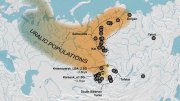Anna Jacobson Schwartz had been a full-time economist at the National Bureau of Economic Research (NBER) for more than a decade when she received a troubling phone call. The chairman of the economics department at Columbia University, where she had studied for a doctorate, had discovered she was using a cubicle in the library. His secretary said that, unless Schwartz registered a dissertation with an adviser, she would lose the cubicle—and her status as a graduate student.
But why was she still a graduate student? It was 1958, and Schwartz had entered Columbia in 1935, after wowing her professors at Barnard with her facility for numbers and her dedication to research. She had helped author a massive two-volume study of the British economy, completed in the late 1940s but only published in 1953 due to wartime paper shortages. “I see no reason why Columbia should not have accepted your share of that for purposes of the dissertation,” wrote Schwartz’s collaborator, Milton Friedman, a professor at the University of Chicago and a Columbia Ph.D. himself. That had been her hope, she returned, but “for many reasons this plan fell through.” Now, Schwartz asked if they could offer part of their current manuscript as her dissertation, a plan Friedman enthusiastically endorsed.
By then, the pair were deep into the research project that would make “Friedman and Schwartz” a phrase to be reckoned with in economics and beyond: A Monetary History of the United States, 1857-1960, published with a thunderclap in 1963. On paper, Friedman directed the project while Schwartz assisted. In truth, it was Schwartz who had helped orient Friedman to the relevant history, providing a syllabus of required reading to get him started. It was she who combed through bank statistics, calculated columns of vault cash, and took trips to Washington, D.C., to scrounge additional data. This formed the backbone of their work and of the monetarist school that would grow from it—a detailed statistical series of money in the United States, starting at the advent of the Civil War.
It was Schwartz who had stretched these figures back in time to encompass the Confederate era, a time of monetary experimentation that fascinated her. She was the one who convinced Friedman to make their project a narrative about money and how it underlay the events of the past. She breathed life into the book’s central argument, a shocking new interpretation of the Great Depression as a monetary tragedy caused by the Federal Reserve. Diving into the archives, she extracted the villain of the story—New York Fed President George Harrison—and mourned the missing hero, deceased banker Benjamin Strong.
And she did all this amid a swirl of domestic life, with her dense letters to Friedman noting summer camps, baseball games, babysitters who made it possible to “get downtown to use the [calculating] machines.” Unlike most NBER economists, Schwartz was part of a two-career household. The child of Jewish immigrants from Eastern Europe, she grew up in New York City and met her future husband, Isaac Schwartz, at Hebrew camp. He worked as a comptroller at an import firm, and together they raised four children. In the end, the writing of A Monetary History would encompass 15 years of Schwartz’s life.
All this time, with Friedman half a continent away, the researchers stayed connected with letters and his semi-annual visits to New York; phone calls were too expensive. As a result, Friedman had little grasp of the dynamics that shaped Schwartz’s life as an economist. After her first missive about using their work as her dissertation, he considered the matter settled. But five years later, shortly after the book’s publication, Friedman was startled to learn Schwartz had not yet been awarded the doctorate. The first excuse was that a coauthored manuscript could not be a dissertation (although Friedman’s dissertation had been coauthored). Now Columbia faculty told Schwartz that because her putative “dissertation” was already in print, it was ineligible, given that the committee’s suggestions could not be incorporated into any revisions.
Friedman was livid. Finally, he appeared to grasp that Schwartz was a victim of sexism. “By any standards whatsoever she has demonstrated her qualifications for the Ph.D. degree,” he roared in a letter to the department chair, who was coincidentally trying to hire him. “Getting a degree at this stage has no great advantage for her and will honor Columbia more than it will help her,” he continued. Schwartz finally had what apparently every woman in economics needed: a powerful male patron. Within a year, she had her doctorate, and Columbia could claim some connection to a book that would resound into economic thinking and global monetary policy for decades.
The times would change, and with them came new respect for Schwartz and a new understanding of her contribution. In the 1970s, she helped found the influential Shadow Open Market Committee; in the 1980s, she chaired the U.S. Gold Commission. She came into the New York NBER office every day well into her nineties, where she was held in awe by a rising generation of economists. And by the time of her death in 2012, the economist who once struggled for a doctorate had nine honorary degrees to her name.








